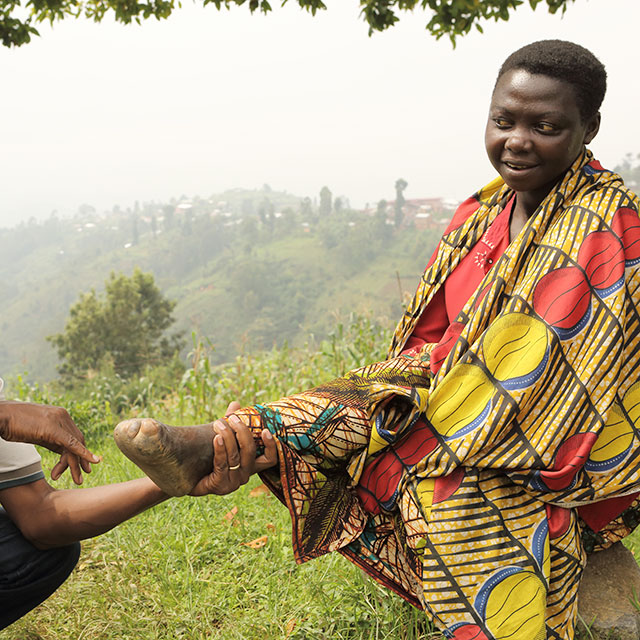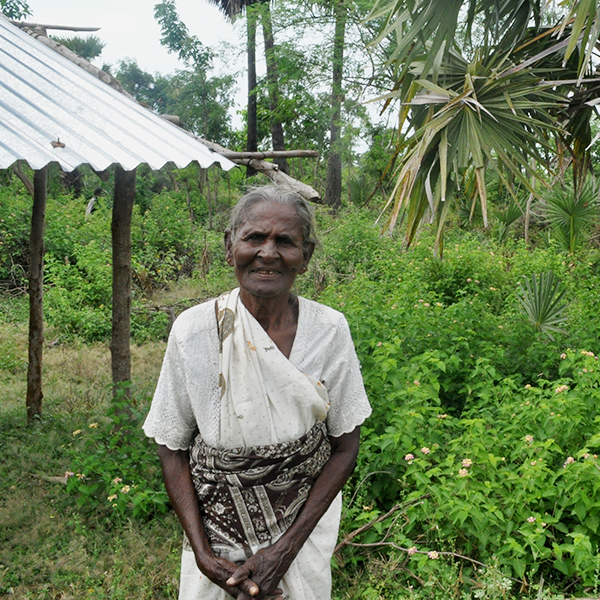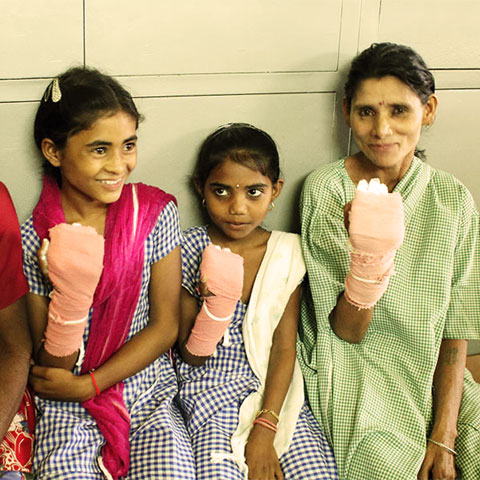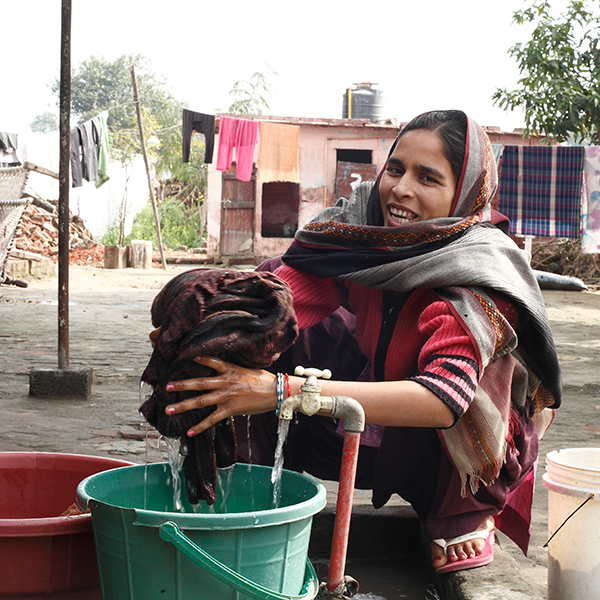Zero Disability
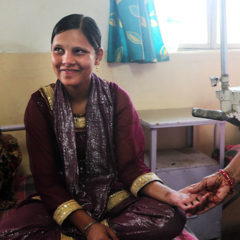
Reaching Zero Disability
Early diagnosis and prompt treatment usually result in patients being cured without any damaging consequences. However, even early treatment will not always prevent the disabling effects of leprosy: much of the disability that remains at the end of treatment was already present at diagnosis. After treatment, many people are still at risk of injury due to loss of sensation in hands and feet, or at risk of the disabling effects of leprosy reactions. Through ongoing research, early diagnosis, prompt treatment of leprosy reactions and injuries to neuropathic limbs, and teaching life-long self-care, we are working together with partners to bring disabilities due to leprosy down towards zero.
Challenges
Nerve damage
Leprosy attacks the nerves. Nerve damage or neuritis can lead to loss of sensation in hands and feet. As a result, people cannot feel cuts and burns and become more prone to wounds such as ulcers, which can lead to disability. Without immense care, the normal activities of life – walking, running, working with the hands – are likely to result in steadily increasing damage particularly to hands and feet.
Leprosy reactions
Leprosy reactions – inflammations that occur during the progression of the disease – affect many patients. Reactions are often chronic. When inflammation is associated with the nerves, nerve function impairment and/or pain will result, severely reducing quality of life and presenting great risk of damage to hands, feet and eyes. This can occur before diagnosis, or during treatment, or in the lifetime after treatment.
Clinicians can test for nerve function impairment and for loss of sensation, but in most countries this is sporadic. Skills in recognising reactions, and knowing how to treat them, are also lacking, and a great deal more is needed to ensure that people with leprosy reactions are properly assessed and treated. Even when the right treatment pathways are known, reaction management often involves very prolonged treatment with steroids, with consequences for mortality and morbidity especially in low-resource settings. Thalidomide is highly effective in the management of some forms of leprosy reaction, but is often unavailable.
Impairments from leprosy
At least 3-4 million people are believed to be living with visible impairments from leprosy. The true figure is unknown as this data is not collected. These disabling impairments represent a very high cost to individuals, families and communities. This is not just due to the activity limitations that result from damage to hands, feet and eyes, but also to the stigmatization that people with visible, leprosy-related damage experience in so many communities.
Working for positive change
Impairment prevention
Early diagnosis and prompt treatment of leprosy are two essentials for the prevention of impairments. ILEP Members are working with governments and other partners worldwide to support public health programmes that will ensure that cases are detected as early as possible, that multidrug therapy is where it is needed, and that people start and complete their treatment without delay.
Treatment of complications
However, complications can and do occur in the form of leprosy ulcers and other wounds, and leprosy reactions. For patients experiencing these complications, wound care, preventative self-care and the proper treatment of leprosy reactions are effective tools for preventing serious disability. In most countries where ILEP is active in disability programmes, people affected by leprosy have access to those services, and ILEP is having a powerful effect in reducing disability. But in around half those countries, these services are minimal, and most countries do not have widespread capability in nerve function assessment. ILEP Members need to work actively with governments to promote adoption of essential care packages that include these basic requirements.
Rehabilitation and mainstreaming
Several ILEP Members offer or support the provision of life-changing reconstructive surgery and assistive devices that can help people overcome the limitations caused by leprosy impairment. In some countries, ILEP Members actively promote community-based rehabilitation, a whole-of-life approach that focuses on the adjustments people can make in order to function well, on equalizing opportunities, and on fostering social inclusion. But these programmes are not available everywhere. The needs are far greater than what ILEP can currently meet.
As a result, ILEP and its Members have focused increasingly on advocating for access by leprosy-affected people to the services and supports that they need. ILEP works with the International Disability and Development Consortium (IDDC) and the NGO NTDs Network (NNN) to advocate with the WHO and other policymakers for better disability services for those affected by leprosy. We are finding that, although some aspects of leprosy are unique, much is gained by collaborating not only with one another inside ILEP, but also with likeminded organizations that are equally committed to preventing and reducing disability.
Better knowledge is also needed
In 2019, scientists and researchers from ILEP Members were involved in one of the Global Partnership for Zero Leprosy research sub-groups that assessed the state of knowledge and the research priorities for disability prevention. The current challenge is to identify funders interested in the priority research questions. ILEP scientists also participated in a WHO consultation, published in 2019, on earlier detection of nerve damage and better treatment of leprosy reactions – two leading causes of disability. More recently, in 2023, ILEP scientists and practitioners participated in a high-level workshop, organised by the Global Partnership for Zero Leprosy, about improving the diagnosis and treatment of nerve function impairment and reactions. Participants agreed on the key research questions and proposed a study design to propose to funders, to answer those questions.
Advocacy and awareness
At the same time, ILEP interacts actively with the United Nations committee that assesses state compliance with the Convention on the Rights of Persons with Disabilities (CRPD). Because most of the committee’s activities take place in Geneva, ILEP is well placed to advocate with this committee. Our aim is to make states and policymakers increasingly aware of the disabling consequences of leprosy and their obligations, under the CRPD, to take active steps to ensure that the rights of persons affected by leprosy are protected with legal force.
These global level activities complement the essential work ILEP Members are already doing at country and community level, to promote the rights of persons with leprosy-related disabilities to rehabilitation and other services, social inclusion and equality of opportunity.
Case studies
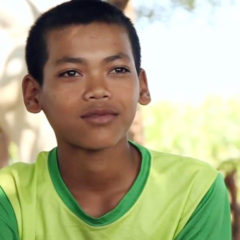
A life after leprosy
Thy’s mother was a former leprosy patient. She noticed patches on him, and when examined he too was diagnosed with leprosy. Thy’s leprosy was diagnosed and treated early so he won’t run the risk of developing disabilities. This is Thy’s […]
Read More →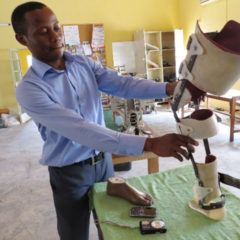
Independence, mobility and dignity
Nigeria, bordered by Benin, Chad, Cameroon and Niger, has the largest population in Africa with over 186 million people. In recent years, conflict has been rife including the brutal and long-running Boko Haram insurgency throughout north-eastern Nigeria, frequent bouts of […]
Read More →